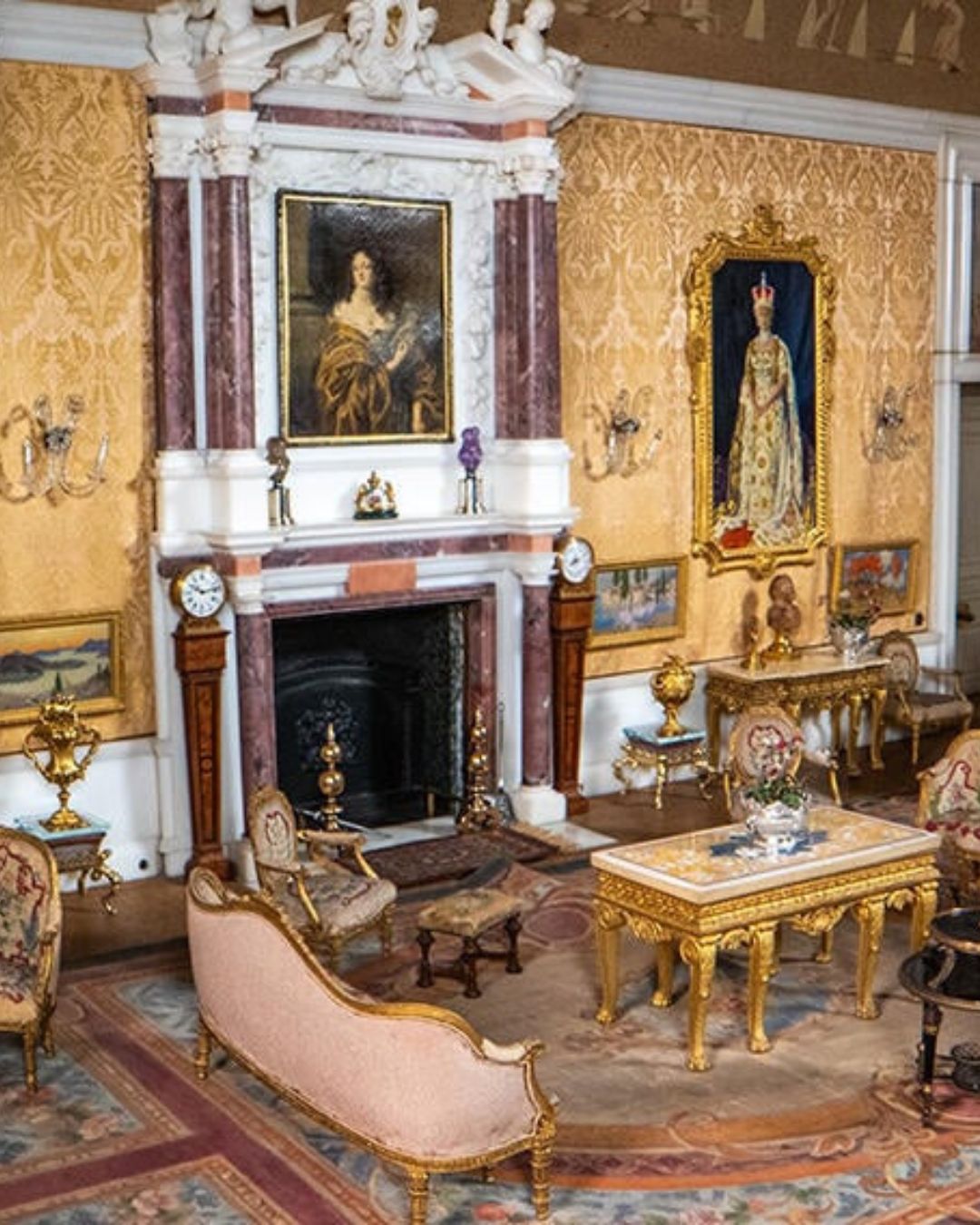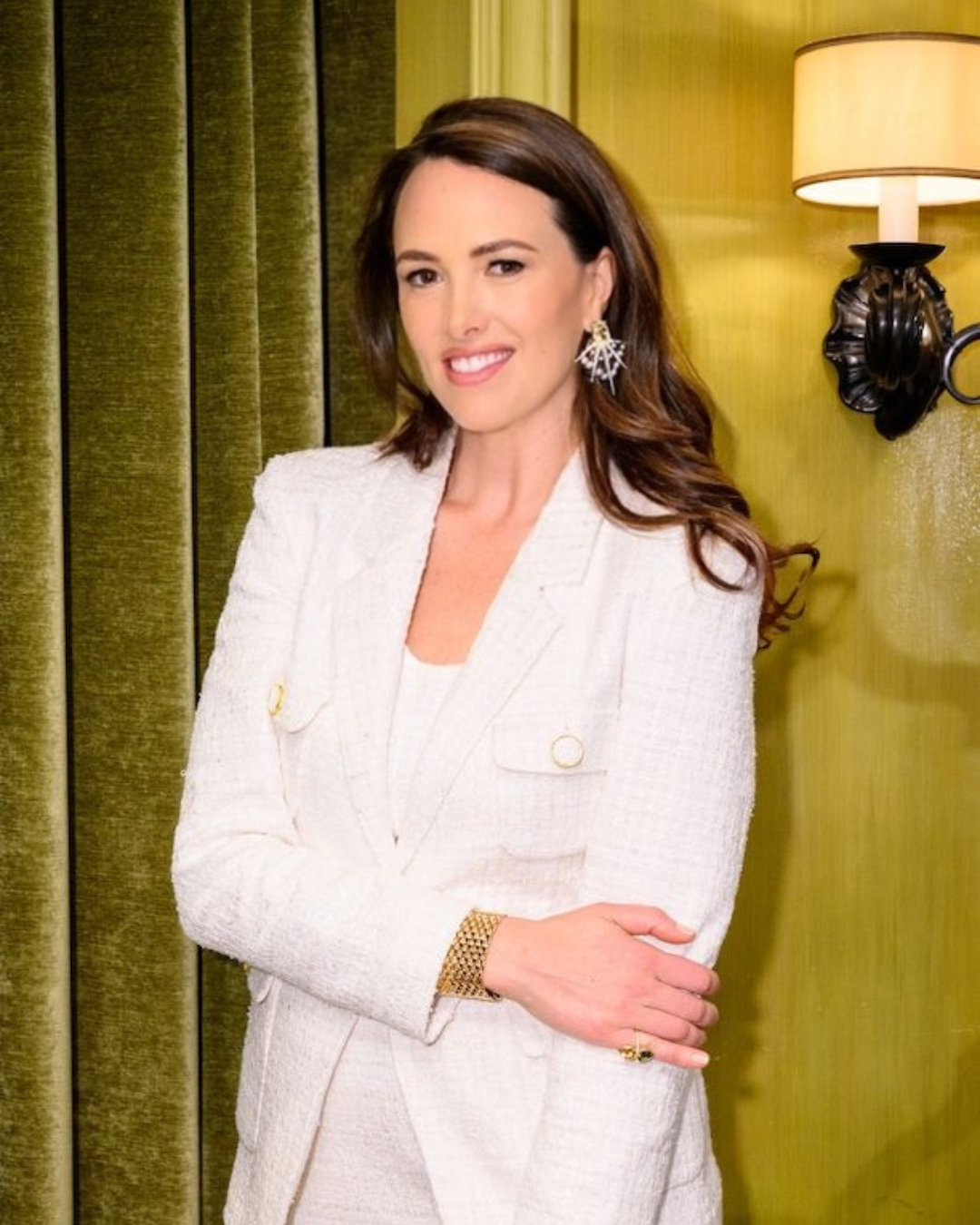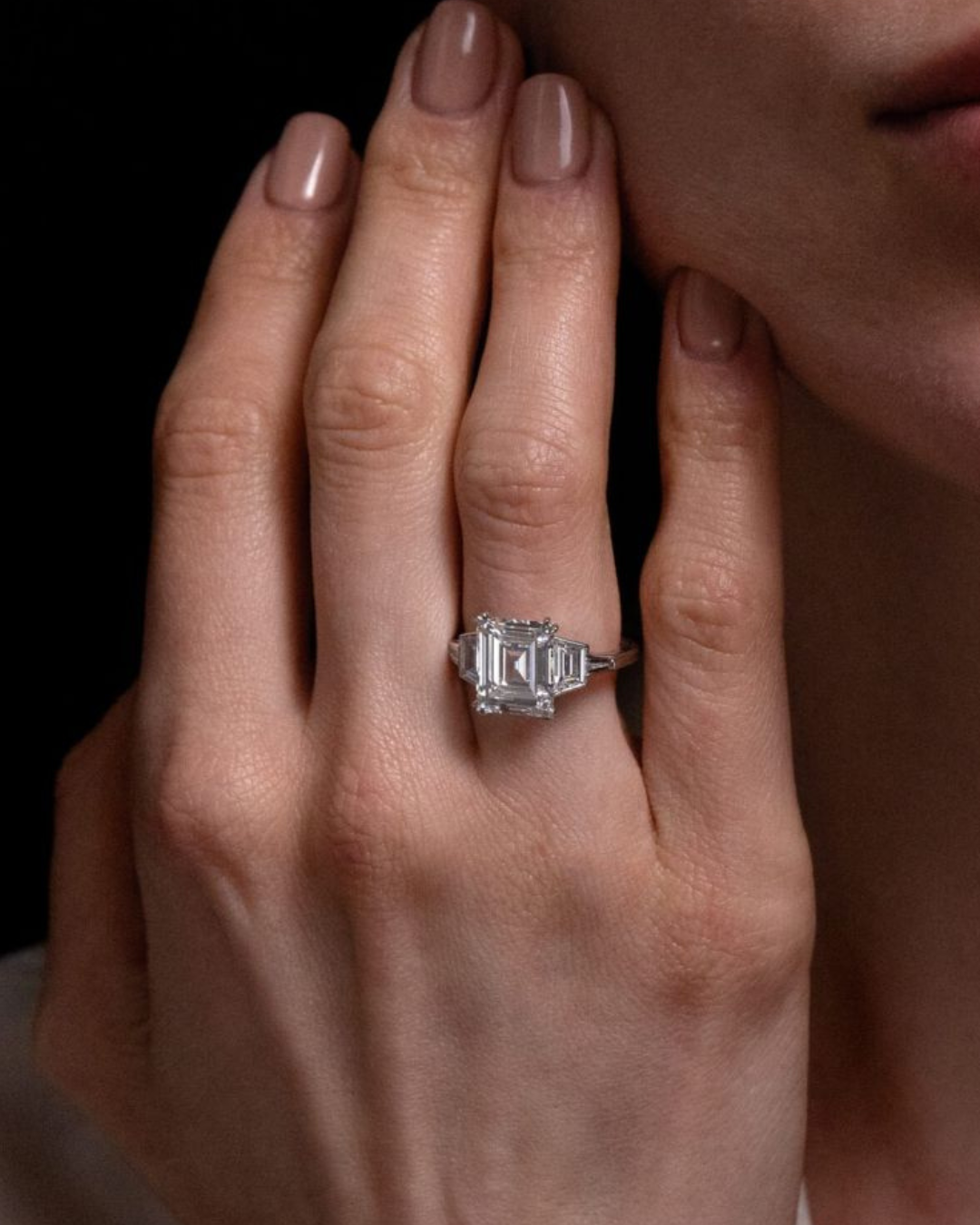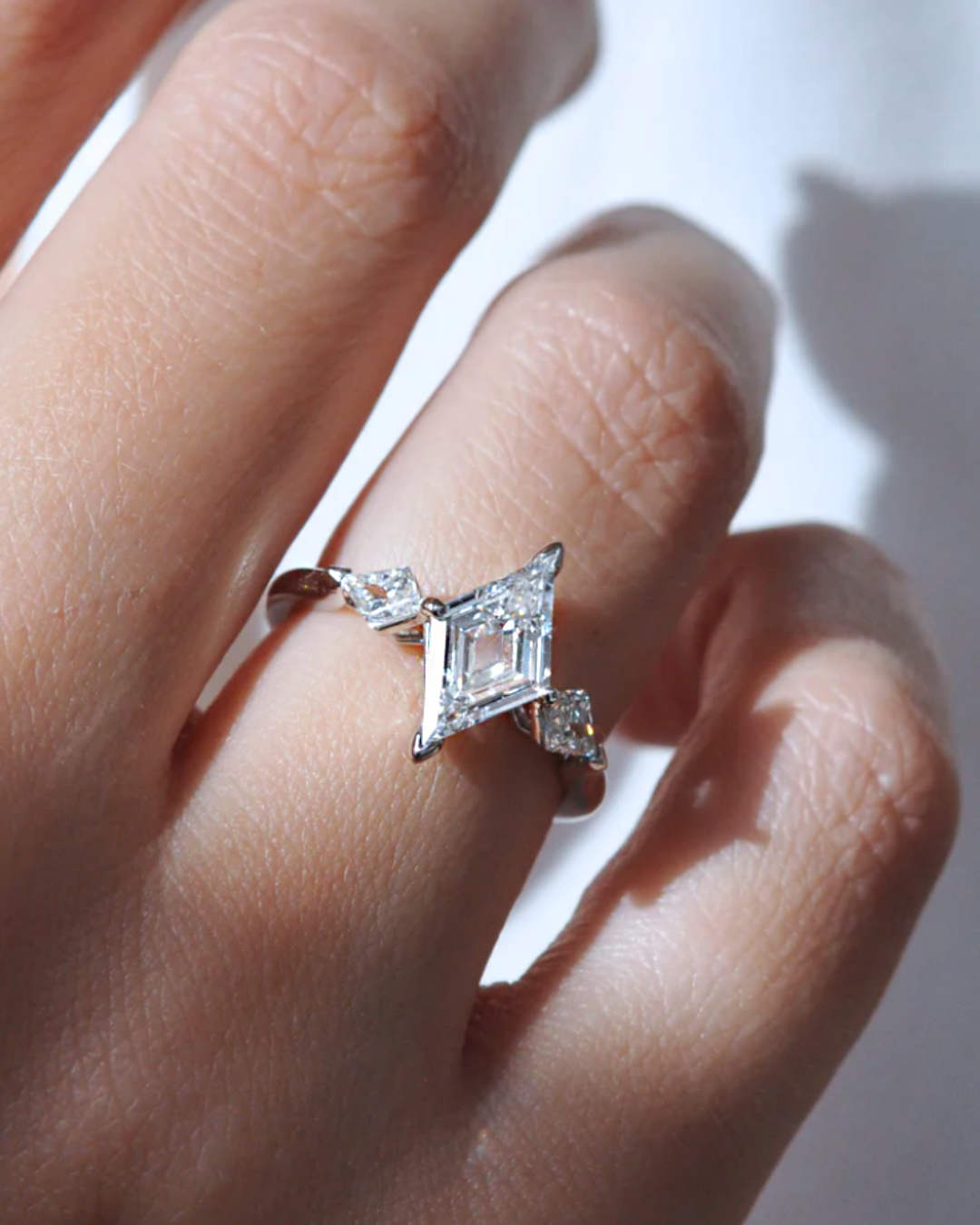Historic Diamonds
Lady Astor’s Cartier Tiara Hits the Auction Block After Nearly a Century
Once worn beside Charlie Chaplin and inspired a Cartier masterpiece now in the V&A, Nancy Astor’s striking turquoise and diamond tiara resurfaces, offering collectors a rare chance to own a dazzling piece of political and jewelry history.
Written by: Grant Mobley, May 23, 2025.
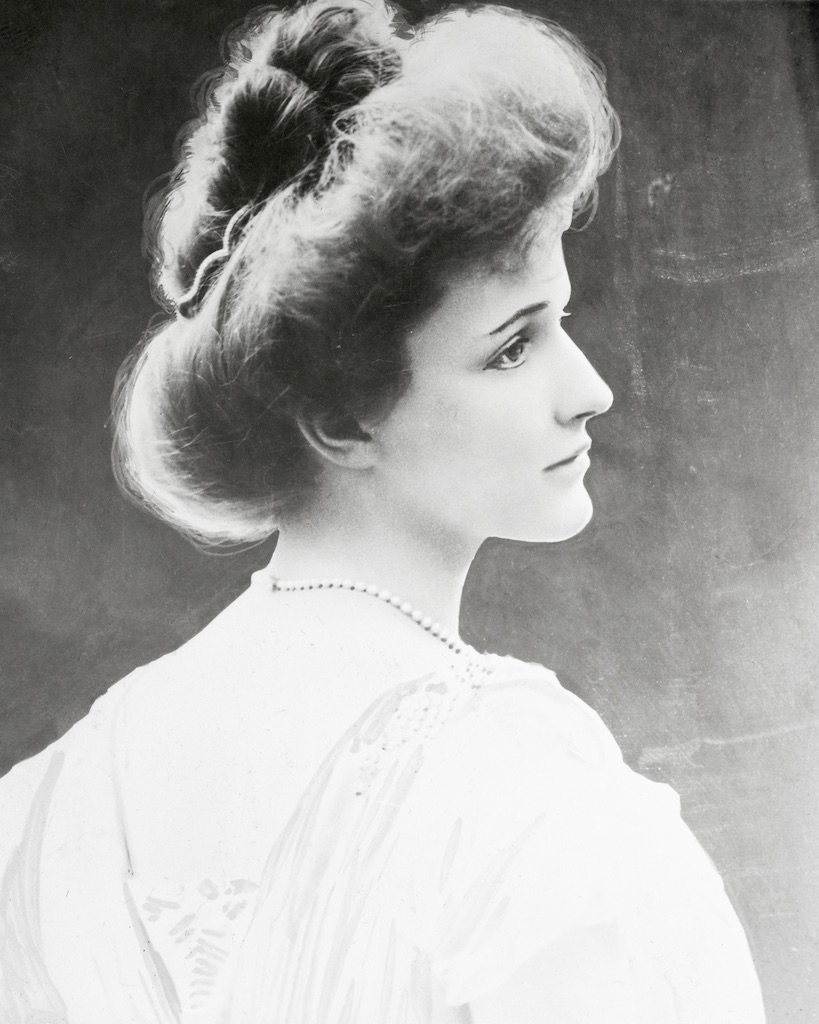
In the extravagant halls of British politics and high society, few people shone as brightly as Nancy Astor. Born Nancy Langhorne in 1879, she earned her place in history as the first woman to take a seat in the House of Commons in 1919. Beyond her political milestones, Lady Astor was a connoisseur of jewelry, and her collection included at least five diamond tiaras, including one of history’s most storied gems: the Sancy diamond, now gracing the Louvre Museum.
This spring, Bonhams London will present a rare opportunity for collectors and historians alike: Lady Astor’s Cartier Turquoise Tiara, first constructed nearly a century ago, will headline the Fine Jewellery sale on June 5, with an estimate of £250,000–350,000. This piece is not just jewelry; it’s a fragment of a remarkable life lived at the intersection of power, politics, and prestige.
Meet the Expert

- Grant Mobley is the Jewelry & Watch Editor of Only Natural Diamonds.
- He is a GIA Diamonds Graduate.
- He has over 17 years of jewelry industry experience, starting with growing up in his family’s retail jewelry stores.
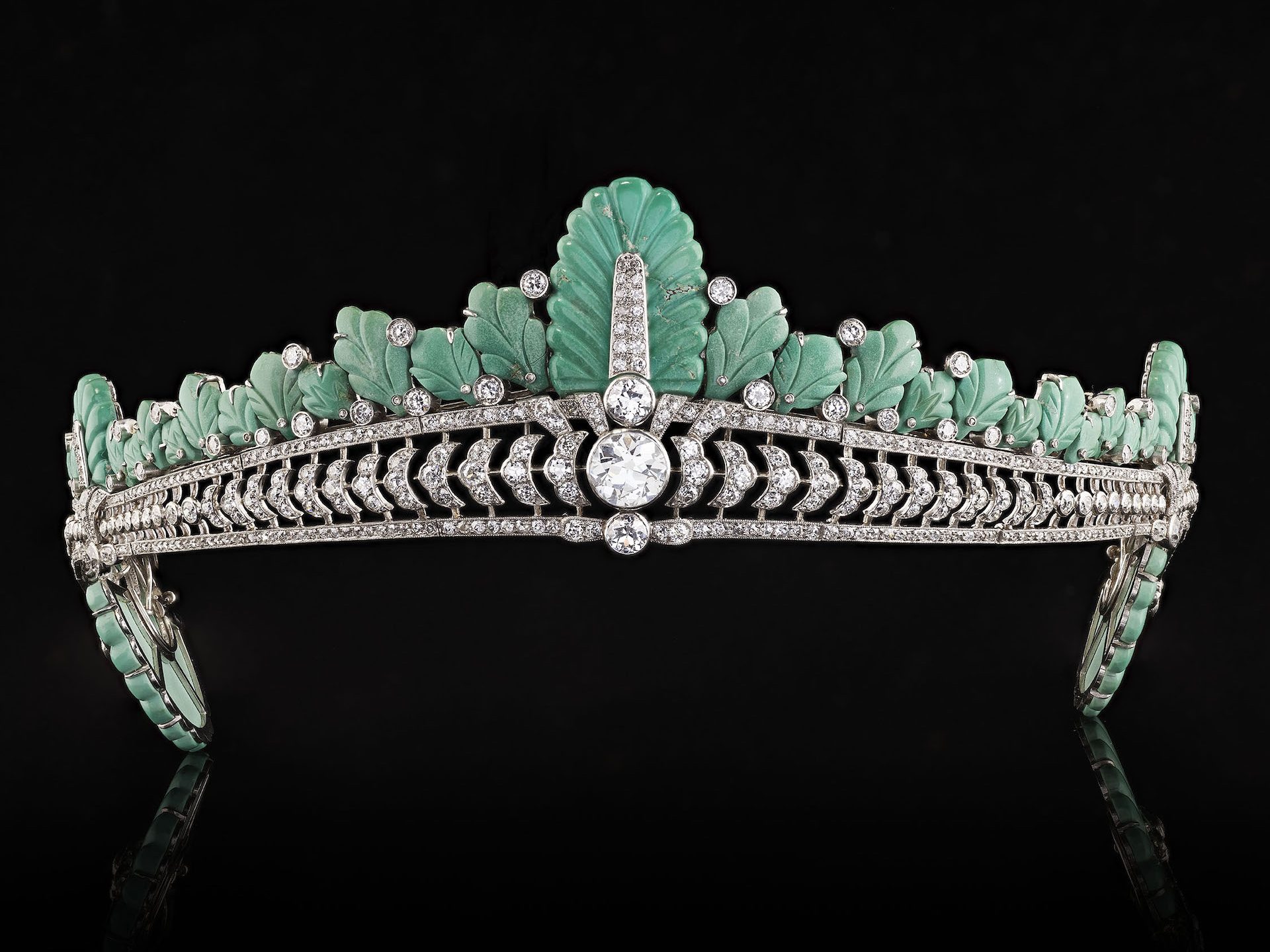
Nancy Astor: A Social and Political Icon
Nancy Astor broke barriers as an American-born woman navigating the male-dominated world of British politics. As a Member of Parliament, she spoke boldly on social issues and hosted salons that attracted luminaries like Charlie Chaplin and George Bernard Shaw. Her residence at Cliveden and later No. 4 St. James’s Square became centers of intellectual exchange and opulent gatherings, and the Cartier Turquoise Tiara played no small part in her public persona.
Crafting Nancy Astor’s Iconic Turquoise Tiara


Originally taken from a Boucheron diamond bandeau, Cartier acquired the piece in the late 1920s. In 1929, Cartier commissioned English Art Works to embellish it with carved turquoise leaves and palmettes. By November 1930, the piece was complete, and within weeks, Viscount Astor purchased it and presented it to his wife.
The resulting tiara blends the fluid motifs of the Art Deco era with an earlier diamond jewelry architecture. Delicate turquoise adornments arc gracefully above a diamond scroll base in an elegant meeting of Boucheron’s structure and Cartier’s artistic refinement.
Nancy Astor’s Tiara Appearances Through History

Lady Astor first debuted the tiara in 1931 during the premiere of City Lights at London’s Dominion Theatre. She is photographed seated alongside Charlie Chaplin and George Bernard Shaw and is undeniably glamorous. The tiara appeared again in the 1930s on her sister, Hon. Mrs. Robert Brand, at Buckingham Palace for a court presentation, demonstrating its versatility and significance within her lineage.
In 1953, the tiara stepped into the spotlight once more when Lady Astor’s granddaughter, Lady Jane Heathcote‑Drummond‑Willoughby, wore it to the Coronation Gala at Covent Garden. Lady Jane had served as a Maid of Honour to Queen Elizabeth II—another link between the Astor legacy and Britain’s royal pageantry.
Nancy Astor’s Sister and the Cartier Tiara Legacy

Cartier’s design for Lady Astor’s tiara inspired another masterpiece in 1936 for her sister, the Hon. Mrs. Brand. That sister’s tiara looks similar, is now in Cartier’s collection, and is on display at the Victoria & Albert Museum in London. It’s a perfect example of how Cartier’s archives inspire new generations.
Although Nancy Astor’s Cartier turquoise and diamond tiara remained tucked away in the Astor family, it has now resurfaced. Its provenance was recently confirmed to descendants of her youngest son, Sir Jakie Astor, paving the way for this historic auction.
More Than a Jewel: A Symbol of Power
Astor’s passion for jewelry extended beyond aesthetic allure. Among her most treasured pieces was the famous Sancy diamond. The diamond was discovered in the legendary Golconda region of India, with a complex history dating back to the 14th century. Set by Cartier into her signature Belle Époque tiara in 1906, the stone remained in her collection until she died in 1964. In 1978, her grandson sold the Sancy to the Louvre for $1 million. Though the diamond is now exhibited with many of the French Crown Jewels in the Galerie D’Apollon, the rest of the tiara is assumed to still be in the possession of her descendants.
What’s at Stake in the Nancy Astor Tiara Auction

The Bonhams sale offers a portal into the life of a woman who defied convention and made history. It steps into the halls of Cartier, Boucheron, and the courts of the early 20th-century elite. Valued at up to £350,000 and steeped in history, the Cartier Turquoise Tiara is both a work of art and a testament to legacy.
Nancy Astor’s Legacy Reawakened
As the auction approaches, scholars, collectors, and jewelry lovers alike await this chance to bring Lady Astor’s iconic tiara out of the archives. More than a crown, this tiara is a living relic of political firsts, artistic collaboration, and family memory. It reminds us how extraordinary jewels become carriers of power and identity, and sometimes reemerge to inspire a new generation.


